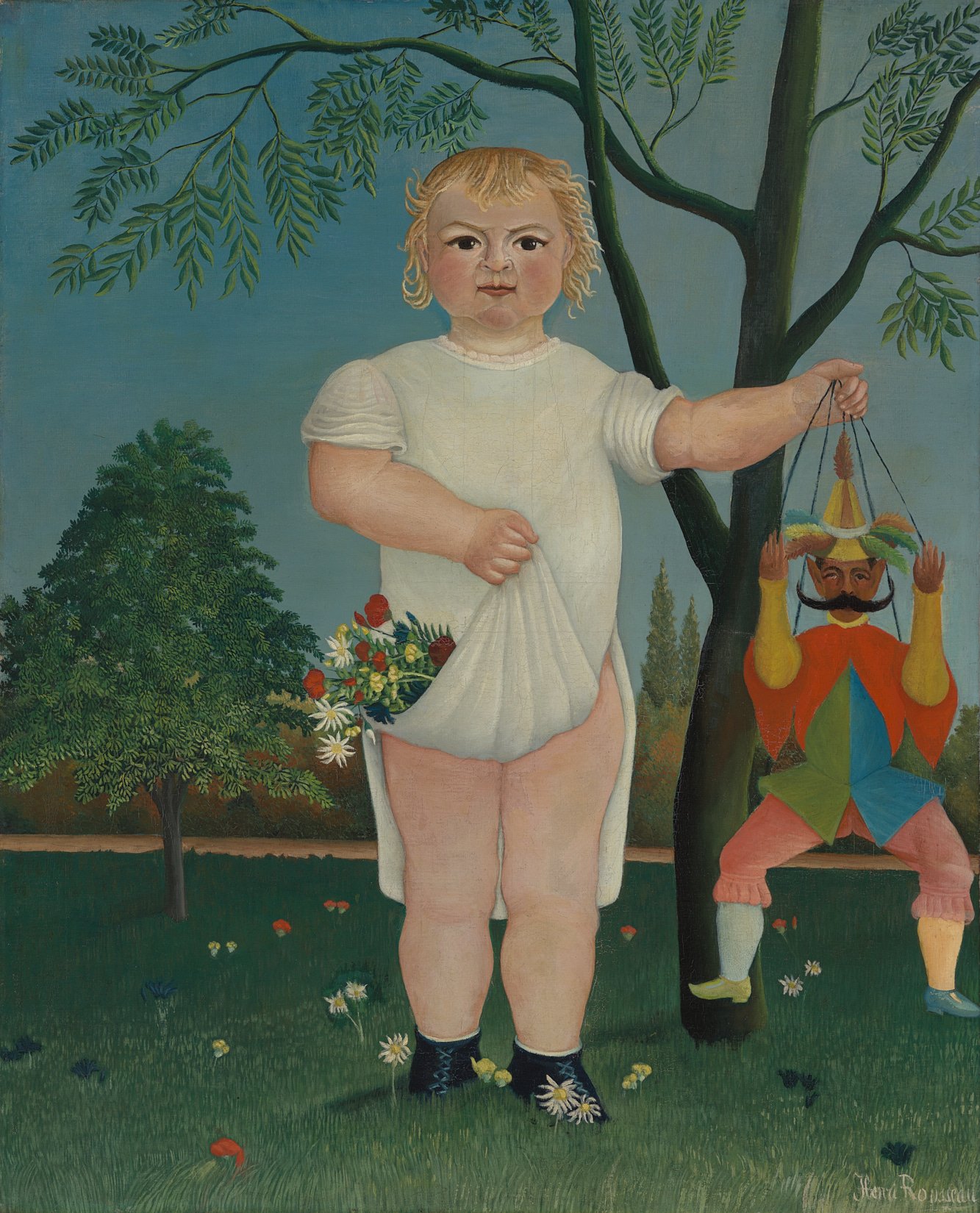Henri Rousseau
To Celebrate the Baby!, 1903

Henri Rousseau
To Celebrate the Baby!, 1903
Kunst Museum Winterthur, Schenkung der Erben von Olga Reinhart-Schwarzenbach, 1970
Foto: SIK-ISEA, Zürich (Martin Stollenwerk)
This portrait of a child by Henri Rousseau is supposed to have been a contracted picture. From early on, both the picture and its artist were surrounded by myths. It has been reported that the child’s parents had given the picture away as a laundry bill.
The reasons for this can be found in this painting: it is not a naturalistic portrait of a child. The figures are frontally facing the viewer in close proximity. Child and jumping Jack, the animate and inanimate figures are presented on the same plane. The flowers and grass have been executed as precisely as the leaves on the tree. There is no difference between foreground and background, which creates the impression of a stage backdrop. Rousseau worked with clear areas of colour: dark green and blue surround the child’s white garment. Red is added in the bunch of flowers and in the puppet’s costume. Henri Rousseau was an outsider: he admired the academic painters and yet became a hero of the avant-garde.
Rousseau created contrasts in the picture: the thickly leaved tree and the barren tree silhouette, the flowers in the meadow and the small bouquet in the child’s gathered garment, youth and age, the natural and mechanical worlds, innocent nakedness and costuming, the white garment and colourful patterns. Admiration for Rousseau stretched from Vallotton to Picasso. The Cubists and the Blue Rider Movement, Magic Realism and Surrealism, sighted both a role model in Rousseau, and the pioneer of a new style of painting.


